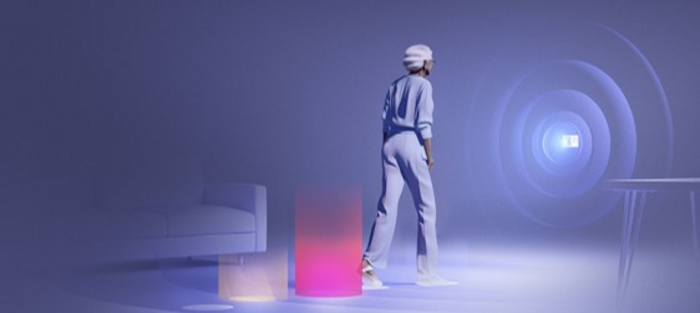“Our method is both precise and easy to use. It can help healthcare staff to carry out a more reliable risk analysis and tailor interventions to achieve a significant effect early on. Hopefully it can help to solve a growing challenge for society,” says Xuezhi Zeng, who is a researcher in biomedical electromagnetics at Chalmers University of Technology.
Registers variation in step times
Fall accidents and cognitive illnesses such as Alzheimer’s disease are increasing as the population ages. Preventive measures are helpful and can reduce both suffering and costs. In Sweden around 100,000 people aged 65 or over have such bad falls each year that they need to seek medical care, with 70,000 of them needing to be admitted to hospital. Approximately 1,000 elderly people die each year due to fall accidents. This situation is not unique to Sweden. For example, in the USA it is estimated that 3 million elderly people seek care in an emergency department due to fall accidents each year.
The new method devised by the Chalmers’ researchers uses a small radar sensor to acquire real-time, high-resolution reading of a person’s walking pattern, especially the time required to take a step.
“It is the variation in step times that is the key. A healthy person normally has a regular gait. But a person at risk of fall accidents often has a large variation in step times. For example, the first step may take a second whereas the second may take two seconds,” says Zeng.
Collects data without filming
A product containing the sensor is no larger than a fire alarm and could be used within the healthcare system, in the home or in care environments for the elderly in order to identify risks. Preventive measures such as physiotherapy, tailored training or the adaptation of furnishing in the home can be implemented in order to prevent fall accidents, thus avoiding both suffering and costly hospital care. Apart from being easy to use, another advantage of the method is that it collects data without filming.
“This means that it can be used without invading people’s privacy and integrity, and without the feeling of monitoring that something such as a camera would give,” says Zeng.
Also, with cognitive illnesses such as Alzheimer’s, an increase in step time variability is often an early symptom. Alzheimer’s disease is one of the most common causes of dementia in the world, and it is difficult to detect at an early stage. Here too, the method could be beneficial as an aid to making an early diagnosis, and contribute to preventive measures and an improved quality of life.
The method is based on an off-the shelf radar sensor and therefore a commercial development is feasible in the near future. In the short term, Zeng hopes that it can be used by the elderly at home and provide healthcare staff with objective and valuable decision support data. She also hopes that in the future the method can facilitate clinical research in the elderly and establish more connections between a change in gait and the development of other illnesses.




